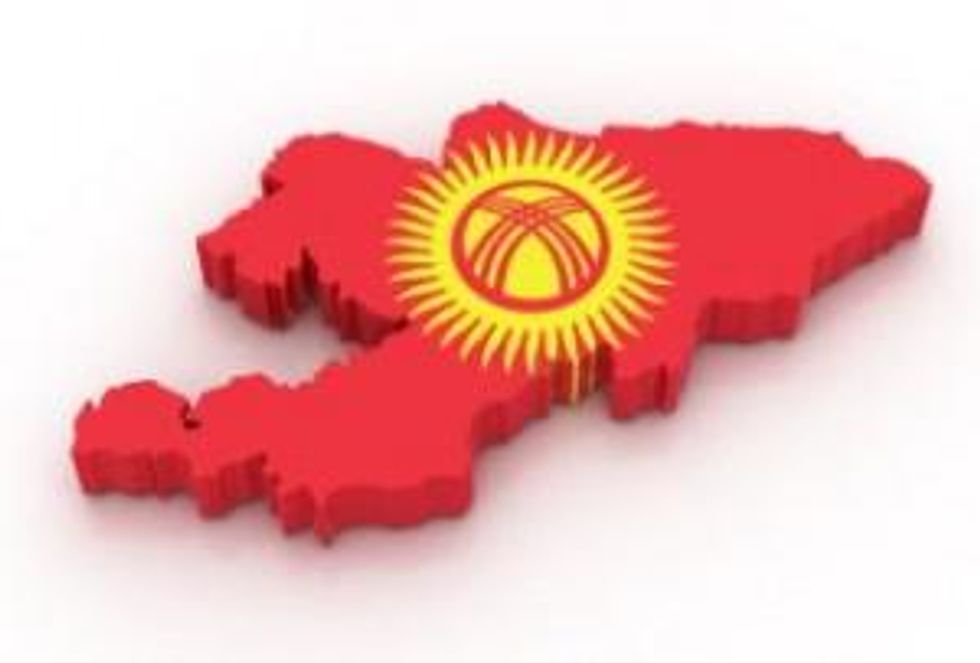The region has a rich uranium exploration history, commencing with high quality geological mapping in the 1930s and followed by Soviet identification of uranium mineralization, both visually and by ground radiometric surveys, throughout the Batken Oblast in the 1940s and 1950s.
Kyrgyzstan (the Kyrgyz Republic) is one of five central Asian democratic republics previously part of the Soviet Union and a founding member of the CIS (Commonwealth of Independent States). The country is landlocked in central Asia, with neighboring countries that include the 2009 leading uranium producing nation in the world, Kazakhstan, as well as China, Uzbekistan and Tajikistan. Kyrgyzstan is rich in mineral resources in addition to uranium that includes substantial deposits of gold, coal, lead, zinc, antimony and other rare earth metals.
The region has a rich uranium exploration history, commencing with high quality geological mapping in the 1930s and followed by Soviet identification of uranium mineralization, both visually and by ground radiometric surveys, throughout the Batken Oblast in the 1940s and 1950s. The ground radiometric data was augmented by regional airborne radiometric surveys in 1973 that covered 2,315 square kilometers. The Mailuu-Suu district, in the Jalal-Abad Province in southern Kyrgyzstan, was a significant Soviet uranium mining area where more than 10,000 tonnes of uranium was produced between 1946 and 1967. The Kara Balta Mining Combine was set up in the 1950s to mine and treat the ore.
Kyrgyzstan’s uranium geology is similar to Kazakhstan’s with the Shu-Sarysu and Sudaraya uranium deposits in South Kazakhstan totaling over 1 million tonnes of uranium, representing a significant portion of known global recoverable resources in the region. Sedimentary rocks in the Fergana Valley are host to significant uranium deposits of “sandstone-style” or “roll-front” uranium deposits. Uranium from these deposits is considered to have been shed from primary uranium occurrences in the Alay mountain range.
Geopolitical Context
Last week, Rare Earth Investing News featured a spotlight on the nation providing a sound analytical framework for investing in the region. The article documented many of the risks and provided details of opportunities of exposure for investors to this country.
Kyrgyzstan is a free market economy and WTO member, providing the freedom to transfer funds, export products and exchange currency. Four years ago, the government made steady strides in controlling substantial fiscal deficit, nearly closing the gap between revenues and expenditures, before boosting expenditures more than 20 percent in 2007-08.
The government and international financial institutions are currently engaged in a comprehensive medium-term poverty reduction and economic growth strategy. Gross Domestic Product grew about 8 percent annually in 2007-08, partly due to higher gold prices internationally, but it retreated 1 percent in 2009 because of declines in remittances and investment following the global financial crisis and because of lower gold production. The IMF and World Bank are supportive of Kyrgyzstan’s national development. Progress fighting corruption, further restructuring of domestic industry, and success in attracting foreign investment are keys to future growth.
The country is a net exporter of electricity with 93 percent generated by hydropower plants. The government of Kyrgyzstan has demonstrated some considerations towards the mining industry, evidenced by its involvement in the large Kara-Balta processing facility (in the country’s north), which recovers yellow cake transported from Kazakhstan.
In January 2008, Monaro Mining (PINK:MNOMY) signed a memorandum of understanding with Chinese resources group Sinosteel for it to take over exploration of its Kyrgyz projects, under which it could eventually own up to 60 percent of two new uranium mines in the country. Last October, Monaro reported that it had sold a 75 percent interest in its Kyrgyz Project to Gate Bridge Co Ltd based in Hong Kong and owned by a consortium of Chinese and Hong Kong investors. Monaro will retain a 25 percent ‘free-carried’ interest until such time as Gate Bridge generates a pre-feasibility study on any of the license areas. In the past, Uranium One (TSX:UUU ) demonstrated interest with exploration projects in the region.






